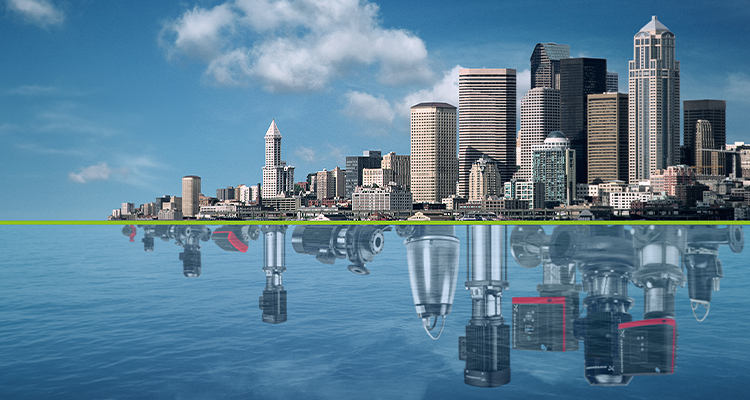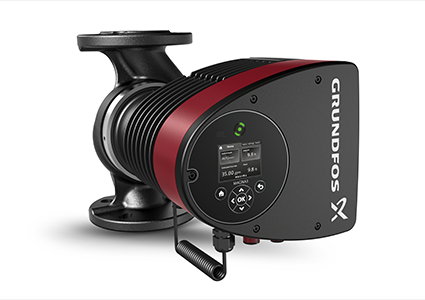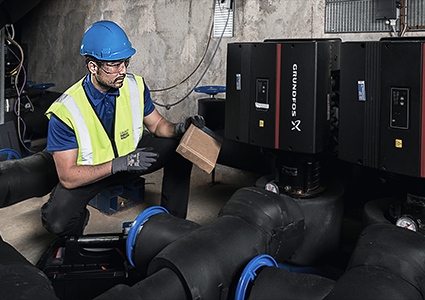
Grundfos is embracing sustainability by protecting and advancing the flow of water
Water is one of the world’s most powerful resources. In many areas of the globe, access to running water is taken for granted, but it has the power to transform the quality of life for individuals in remote areas with limited access.
 From providing drinking water to small, remote villages to removing wastewater from the highest skyscrapers, Grundfos provides solutions that help its partners and customers move water to where it needs to go. It boasts a vast array of pumps, motors, water dispenser systems, sensors, and accessories for various industries including pharmaceuticals, food and beverage, healthcare, and industrial manufacturing.
From providing drinking water to small, remote villages to removing wastewater from the highest skyscrapers, Grundfos provides solutions that help its partners and customers move water to where it needs to go. It boasts a vast array of pumps, motors, water dispenser systems, sensors, and accessories for various industries including pharmaceuticals, food and beverage, healthcare, and industrial manufacturing.
However, Grundfos is not only a water pump manufacturer, but is committed to respecting, protecting, and advancing the flow of water across the globe. Its purpose is to pioneer solutions to the global climate crisis while promoting a greater respect and understanding of water.
The business protects water by minimizing waste, inefficiencies, shortages, and inaccessibility, and advances availability through system innovations and energy optimization, with a vision to sustain the flow now and in the future.
Having held various positions over his 24-year career with Grundfos, Bent Jensen entered the group management team in 2022, currently serving as the group’s Executive Vice President and CEO of the Commercial Building Services division.
“The business was founded back in 1945 by Poul Due Jensen, who had a very entrepreneurial spirit and sought to create a solution for farmers who needed pumps to release and retrieve water for their cattle,” Bent opens. “Grundfos began by developing water pump solutions, predominantly for utilities in domestic and commercial buildings.
“Today, we employ around 20,000 people and have a revenue of around 33 billion Danish kroner, equivalent to just under five billion US dollars. Within the commercial sector, we turn over around $1.2 billion from waterborne systems in commercial buildings. While our main product is water pumps, which are used for heating, cooling, water boosting, and wastewater removal, we’re constantly growing and exploring new opportunities.
“We’ve recently restructured the business and created four distinct divisions: commercial building services, domestic building services, industry, and water utility,” Bent tells us. “We wanted to reinstate the global nature of our operations, so we anchored each division in different places. We decided to locate our commercial building services in Asia, which has seen the opening of a brand-new global headquarters in Singapore.
“Firstly, Asia has a rapidly growing population and an equally high rate of urbanization, meaning there’s a high concentration of large commercial buildings. It’s also an area where our services are required all year round and the primary driver is air conditioning and cooling.
“As you can imagine, in Europe, our heating services are in higher demand due to the colder climate. Whereas in Asia, cooling is required year-round, so Singapore is a great location for us to learn about demand, as well as keep up to date with innovative technologies as they emerge. We’ll retrieve that local knowledge from our Singapore headquarters and utilize it across the globe.”
Aside from its core operations, Bent is particularly passionate about sustainability. “We’re the first water solutions company with approved net-zero, science-based targets,” he proudly states. “Our goal is to reach net zero by 2050 through cutting our own emissions, as well as those we indirectly cause by purchasing energy.
“Heating and cooling in buildings and industry account for 40 percent of global, final energy consumption, and most of the pumps installed in those buildings are over 20 years old. There’s an average of 200 million existing pumps that are not the most energy efficient, for instance, so there’s an enormous energy saving to be made by replacing them with up-to-date models.
“In fact, we estimate that by replacing existing pumps with new, energy-efficient ones, we could save energy equivalent to the entire electricity consumption of Portugal,” Bent reveals. “The good news is that technology has shifted and evolved; the solution already exists! It just isn’t being implemented at the rate needed to sufficiently lower emissions, but there’s an enormous potential saving to be had from simply upgrading the pumps.”
He continues: “Our founders believed that we need to leave the world in a better place than we took it over, and that principle is deeply rooted in our operations. Innovation is key to creating solutions that provide a better world for future generations through energy efficiency, conserving water, and improving access to water in remote areas.”
In terms of remote areas, the business is working with various charities and NGOs to ensure equal access to water. “We started developing solutions that can operate remotely a number of years ago,” Bent explains. “However, we found that if you just installed a standard electronically controlled pump, we could be almost sure that it wouldn’t be working on our return a year later. There’s often no infrastructure in place to support the day-to-day functioning of the pump, so when things go wrong, no one knows how to fix it.
“To solve the issue, we’ve developed self-sustaining water pumps powered by renewable energy. These are more practical for local people to manage and therefore more advantageous to the communities in which we install them. We’re still providing access to water in areas that are completely remote, without any need to be connected to a power grid.”
Grundfos has recently worked with World Vision Zambia to install numerous solar-powered installations across the landlocked country, where water scarcity is particularly high. It is also replacing existing hand pumps with solar-powered ones as part of the initiative to upgrade and modernize water pumping in Africa.
“Although we work with organizations like Water Mission and Red Cross, we also complete our own installations through the Grundfos Foundation,” Bent reveals. “While management is concerned with the day-to-day running of the business, the Foundation focuses the majority of its efforts on responding to crisis and natural disasters that impact water supply.”
In 2022, the Grundfos Foundation worked with Ghana Water Company Limited (GWCL) to install AQTaps in low-income urban communities across the country. These are solar-powered, ATM-style water dispensers that provide round-the-clock access to water. Fifty taps have been installed to date, which cater to around 18,000 people.
As our conversation draws to a close, the topic shifts towards the construction industry and Bent reflects on his career through a wider industry lens. “Construction is the largest single industry in the world, but its productivity has not kept pace when compared to others,” he proposes. “It still uses the traditional concept of building on site, but with an ageing industry and consequent skills shortages, we need to consider how to take complexity away from the building site itself.
“Maintaining productivity requires a different way of thinking and a shift towards a modern, off-site approach. Off-site buildings are constructed by piecing together prefabricated components, which makes the on-site process much quicker and means that skilled workers can be utilized more efficiently. I think the benefits of off-site building will drive the construction industry away from on-site builds, especially as we continue to address global skills shortages.”
Despite Bent’s concerns over the future of construction, Grundfos’ efforts to make the industry more sustainable are admirable. It not only takes its own environmental impact into consideration but responds to social demands for water across the globe.
“Moving forward, I’d like to see significant investments in upgrading existing buildings to the most energy efficient standards.
I think that governments around the world will need to subsidize costs associated with installation to ensure that vision becomes
a reality.
“We need to see a shift in attitude where the energy consumption and efficiency of a building are prioritized over the initial cost; it is an additional investment that’s necessary to ensure a building is future-proof,” Bent concludes. “Ultimately, our aim is to see our energy efficient products become the norm for both new and existing buildings.”
Bent Jensen
www.grundfos.com